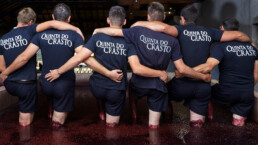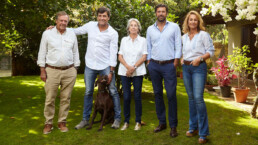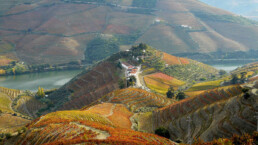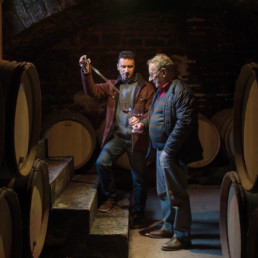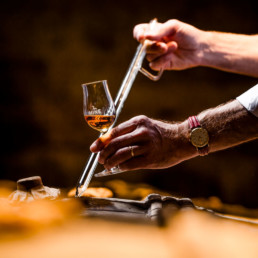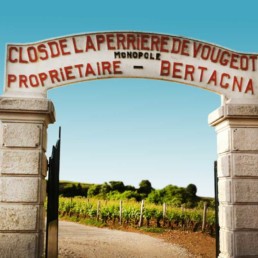Jewels, jewels, glorious jewels – especially of the liquid variety!
How lucky are we that the Dhall & Nash portfolio has such a treasure trove of vinous jewels to taste and explore? However, having such a bounty can sometimes mean we overlook a few of those hidden sumptuous specimens. Wait no more, help is here! This blog will be your Indiana Jones, intrepidly uncovering the hidden gems from the depths of D&N’s “Lost Ark”!
Our Hidden Gems will be wines to get excited about, wines with golden accolades as long as the Amazon River, wines that give you great bang for your buck, wines that have a great story, wines with both style and substance and so much more.
Jewels, jewels, glorious jewels – especially of the liquid variety!
How lucky are we that the Dhall & Nash portfolio has such a treasure trove of vinous jewels to taste and explore? However, having such a bounty can sometimes mean we overlook a few of those hidden sumptuous specimens. Wait no more, help is here! This blog will be your Indiana Jones, intrepidly uncovering the hidden gems from the depths of D&N’s “Lost Ark”!
Our Hidden Gems will be wines to get excited about, wines with golden accolades as long as the Amazon River, wines that give you great bang for your buck, wines that have a great story, wines with both style and substance and so much more.
This Month's Hidden Gem is:
2018 Quinta do Crasto Flor de Crasto
This wine is a red blend of Tinta Roriz (Tempranillo), Touriga Franca and Touriga Nacional.
“Deep cherry red. Full of dark fruit with a light and attractive rocky stone-dust quality on the nose. Lashings of fruit and peppery spice on the palate without any unwanted fruit sweetness. Compact and yet rounded. Straightforward and a good representation of the Douro in an ‘entry-level’ wine with freshness to balance the fruit on the finish. Smooth enough to be drunk now but no hurry. The alcohol does not stick out. 14.5% Alc.” – Julia Harding MW (JancisRobinson.com Reviews) 16/20 Points
This wine is a huge fave with the D&N team as well. As the review attests, this is an approachable style that is, dare we say, immensely smashable!
Perfect paired with your peasant pasta, chargrilled lamb, chorizo sausages, or a hunk of manchego cheese and crusty sourdough bread!
$14.95 ex gst
Who is Quinta do Crasto?
Voted 8th in World’s Best Vineyards Awards 2020
Portugal is not just about Port – here is your chance to explore some seriously sexy still wines from a great Portuguese producer. Quinta do Crasto many consider to be the finest estate for the production of red wine in Portugal.
Crasto’s cult wines ‘Vinha Marie-Teresa’ and ‘Vinha da Ponte’ are amongst the most highly rated and sought-after wines from Portugal, and we also happen to have these top drops here at Dhall & Nash!
“Quinta do Crasto not only has some of the most breath taking views in the beautiful Douro Valley, but it has mastered the art of making red Douro table wine a thing of beauty, while many of its neighbours continue to overcomplicate and over-oak the stuff.” – Oz Clarke, Wine Critic
Firstly, how did this Portuguese table wine revolution start?
Douro table wines used to be an afterthought, made from grapes left over from making port and pretty much just for local consumption. Then in the 1990s still wine production began to ramp up after their national regulations changed and shipping wine directly from wineries was allowed. Further, new subsidies from the E.U. had become available and international investment arrived to foster the new wave. Thus, the game changed with more consideration taken for planting, winery modernisation and selecting vineyards specifically for table wines. Not to mention the winemakers and wineries wanted to share with the world their knowledge and pride in the more than 250 Portuguese indigenous grape varieties.
These varieties that had long been used for their legendary ports were equally as exciting when made into table wines. Grapes such as Touriga Nacional, Touriga Franca and Tinta Roriz (Portugal’s name for Tempranillo), Tinta Barrocca, Sousao, Bastardo, Touriga Franca, Tinto Cao plus too many others to list here.
And so with this growing global interest in Douro table wines and recognition of their quality, Dhall & Nash snapped up Quinta do Crasto’s exceptional still wines for our tasting pleasure here in NZ.
Fun Fact: There are 31 DOCs (defined geographical boundaries for wine production) within the Douro. Actually, it was the world’s first Demarcated Wine Region in 1756!
The Crasto Story
“The plan is to conquer the world while keeping our feet on the ground” – Miguel Roquette
Nestled in a most magical spot in the Douro, in the heart of Cima Corgo, Quinta do Crasto is one of the oldest winemaking estates in the region and is officially classified as an “A” grade vineyard property. The name Crasto is derived from the Latin word Castrum, which means ‘Roman Fort’. The first known references to Quinta do Crasto can be traced back to 1615.
In the early 1900s, Quinta do Crasto was purchased by Constantino de Almeida, the founder of the famous Constantino Port House. Today his granddaughter, Leonor Roquette, and her husband Jorge Roquette own and manage the estate together with their sons, Miguel and Tomas.
The Roquette family has invested a lot of resources to rebuild and expand the vineyards and facilities to produce top quality Port and also stunningly seductive Douro table wines. Vineyard mapping, DNA-matched replanting, a new state-of-the-art wine cellar, plus centuries of tradition mean that no detail in their winemaking or vineyard management is overlooked.
“The Douro Valley is a vast region, and steep – it looks as if the grapes are growing in the Grand Canyon.” – Thomas Girgensohn (Gourmet Wine Traveller)
The Crasto Terroir
For Miguel Roquette and winemaker Manuel Lobo, there are so many factors that combine to make the Douro Valley special: the people, the ancient traditions, the grape varietals, the soil, and the individual micro-climates of the estate to name the obvious.
The upper part of the property is planted with Touriga Nacional, Tinta Barroca, Tintas Cao, Roriz and Franca. There are many different sun exposures and altitudes of up to 600 metres. In the lower part of Crasto there are the two great vineyards of Maria Teresa and Vinha da Ponte containing perhaps 30 varieties of old vines at almost 100 years old! Roquette describes this as “truly a fruit salad”. He says the foundation recipe for Crasto wine is in the schist soil and it is the older vineyards from which the top end wines are produced.
The ‘Maria Teresa’ single vineyard site is named after the first granddaughter of their great grandfather and was planted in 1912. ‘Maria Teresa’ faces east towards Spain, absorbing the morning and midday sun but in the afternoon it is able to cool down. Within this site there are between 32 and 35 varietals planted. Then within the legendary ‘Vinha da Ponte’ site, there are over 22. The mixed grapes ripen to differing degrees and combine well with the superb terroir, supplying the unique identity of these acclaimed red wines. “Most of our mature vines produce perhaps 6-7 bunches of grapes or 2 kilos of fruit, but with the ‘Maria Teresa’ vines it is only 150 grams, so only 10% of the younger vines… the concentration is amazing”. That really sums up their commitment to quality!
The family has found that Touriga Nacional is the most flexible of grape varieties because it adapts so well to both dry and wet conditions. In the upper Douro, Touriga flourishes and on the Roquette’s new 140 hectare estate Quinta da Cabreira, near Vale Meão – 40 hectares are already planted with 40 to follow, the majority with this dark and deep indigenous varietal. When speaking of Touriga plantings overseas, Miguel is so far unimpressed and feels it remains most compatible with the local Douro schist.
Going forward, the key to their continued successful still wine production has been to throw off the constraints of Port production. Different philosophies have been needed – picking the grapes earlier, gentle maceration and focusing on the other grape varieties have been important elements. The resultant wines are powerful but balanced by a natural acidity. “Freshness” is the term winemaker Manuel Lobo uses more than any other and it is quite an achievement in this hot climate. He has undoubtedly captured and bottled their unique terroir. This is an exciting mix of tradition and innovation. With countless accolades and widespread acclaim from their first vintage on, the team at Quinta do Crasto is devoted to excellence!
As the highly esteemed wine critic and writer Jancis Robinson has succinctly observed, times are ripe for further appreciation of the calibre of these Portuguese wines now being produced:
“There is a real air of excitement in the Douro that this extraordinary terrain can now express itself in two such different types of wine…” – Jancis Robinson, ‘The World Atlas of Wine’


